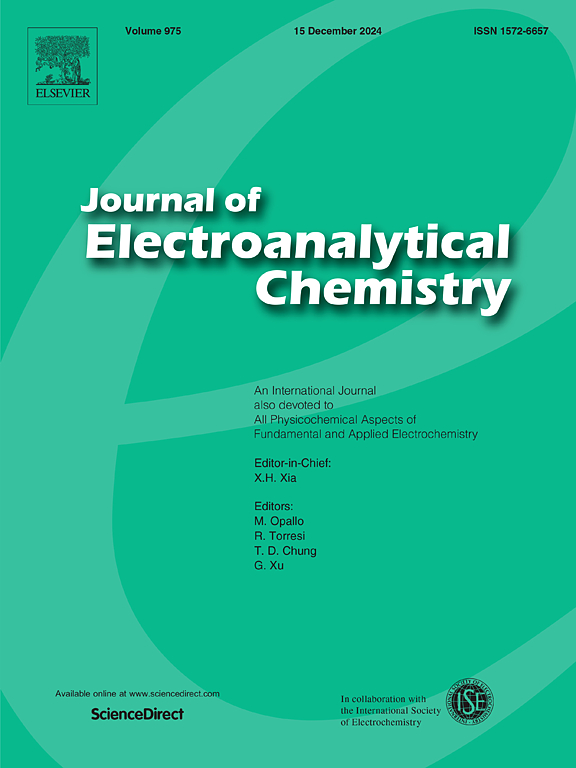构建快速灵敏检测香草酸的 Cu2O-CuO-W3O-W2C 复合材料电化学传感器
IF 4.1
3区 化学
Q1 CHEMISTRY, ANALYTICAL
引用次数: 0
摘要
香草酸是一种酚类化合物,具有抗氧化特性,在预防癌症和动脉粥样硬化等多种退行性疾病方面发挥着重要作用。本研究以多氧金属基金属有机框架(POMOFs)为前驱体,通过热分解,开发并应用了一种复合材料(Cu2O-CuO-W3O-W2C)电化学传感器来检测香草酸。合成的 Cu2O-CuO-W3O-W2C 具有高导电性和优异的电催化性能。在最佳条件下,该电化学传感器的电流密度与香草酸浓度(50-1100 μM)之间呈线性响应,最低检测限为 1.439 μM。该传感器还用于测定不同实际样品(果汁和果皮)中的香草酸,结果令人满意。本文章由计算机程序翻译,如有差异,请以英文原文为准。
Construction of electrochemical sensor of Cu2O-CuO-W3O-W2C composite material for rapid and sensitive detection of vanillic acid
Vanillic acid is a phenolic compound which has antioxidant properties and plays an essential role in the prevention of several degenerative diseases, including cancer and atherosclerosis. This work reports the development and application of a electrochemical sensor for vanillic acid detection by a composite material (Cu2O-CuO-W3O-W2C) using polyoxometal-based metal–organic frameworks (POMOFs) as precursor through thermal decomposition. The synthesized Cu2O-CuO-W3O-W2C have high electrical conductivity and excellent electrocatalytic performance. The electrochemical sensor displays a linear response between the current density and concentration of vanillic acid (50–1100 μM) with a lowest detection limit of 1.439 μM under optimal conditions. The sensor was also demonstrated for the determination of vanillic acid in different real samples (fruit juice and fruit peel) and satisfactory results were obtained.
求助全文
通过发布文献求助,成功后即可免费获取论文全文。
去求助
来源期刊
CiteScore
7.80
自引率
6.70%
发文量
912
审稿时长
2.4 months
期刊介绍:
The Journal of Electroanalytical Chemistry is the foremost international journal devoted to the interdisciplinary subject of electrochemistry in all its aspects, theoretical as well as applied.
Electrochemistry is a wide ranging area that is in a state of continuous evolution. Rather than compiling a long list of topics covered by the Journal, the editors would like to draw particular attention to the key issues of novelty, topicality and quality. Papers should present new and interesting electrochemical science in a way that is accessible to the reader. The presentation and discussion should be at a level that is consistent with the international status of the Journal. Reports describing the application of well-established techniques to problems that are essentially technical will not be accepted. Similarly, papers that report observations but fail to provide adequate interpretation will be rejected by the Editors. Papers dealing with technical electrochemistry should be submitted to other specialist journals unless the authors can show that their work provides substantially new insights into electrochemical processes.

 求助内容:
求助内容: 应助结果提醒方式:
应助结果提醒方式:


